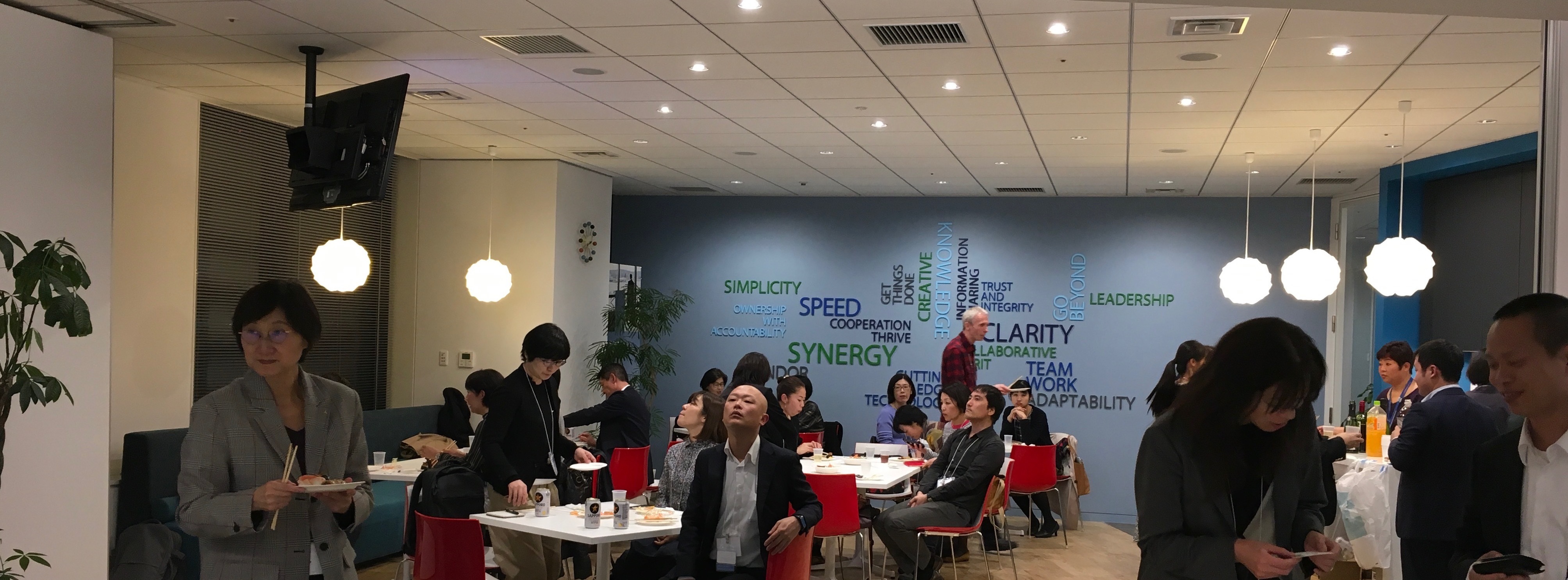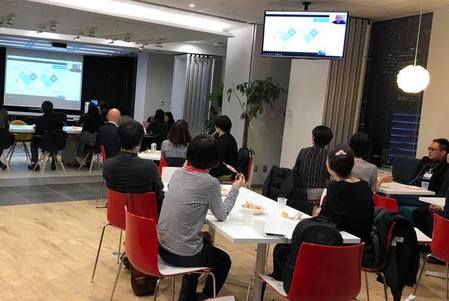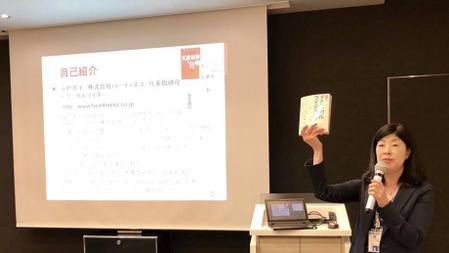Women in Localization Japan 第16回イベント報告
Women in Localization Japan
第16回イベント報告
Dominick Kelly
XTM International Ltd.
Client Solutions Manager - EMEA

Dominick is an experienced consultant with over 16 years in the translation and localization industry, providing language solutions across a range of major industry sectors. He is a qualified software engineer that has worked for Enterprises, translation suppliers and language software developers. A true problem solver and innovator within the translation technology space.
高橋 慈子
株式会社ハーティネス
代表取締役

東京農工大大学卒。技術系出版社を経て、テクニカルライターとしてフリーランスで取扱説明書の作成に関わる。1988年テクニカルコミュニケーションの専門会社として、株式会社ハーティネス設立。
企業の取扱説明書やマニュアル制作のコンサルティングや人材育成に関わる。テクニカルライティング研修のほか、ビジネス文書研修の企画や実施、各種セミナーで文章の書き方指導を展開。大妻女子大学、立教大学、慶應義塾大学 非常勤講師。
情報処理学会ドキュメントコミュニケーション研究会幹事。
著書に『技術者のためのテクニカルライティング入門講座』(翔泳社)、『人より評価される文章術』(共著・宣伝会議)、『SEの文書技術』(日経BP)など。
http://www.heartiness.co.jp/
Women in Localization Japan 第16回イベント報告
日時●2018年11月30日(金)19:00 ~ 21:30
開催場所●ネットアップ株式会社 会議室
セッション I
テーマ● Continuous Localization Delivery (CLD)
登壇者●Dominick Kelly, XTM International Ltd.
セッションII
テーマ●伝わる日本語のスタイルとルール ~翻訳しやすい日本語・やさしい日本語の観点から~
登壇者●高橋 慈子 Shigeko Takahashi, 株式会社ハーティネス
WL事務局メンバー(上田 有佳子・千葉 容子・澤村 雅以・加藤めぐみ・森 みゆき)
報告者●目次 由美子(XTM International Ltd.)
ローカリゼーションに携わる女性のための非営利団体として2008年に米国加州で設立された「Women in Localization」の第16回イベントが、2018年11月30日に忘年会も兼ねて開催された。日本支部は2015年に発足し、3ヶ月ごとに勉強会兼ネットワーキングのイベントを開催している。発足当初は約10名であった会員は今や100名を越え、クライアント企業のみでなく、翻訳会社や個人翻訳者、翻訳ツールベンダーを含む。ローカリゼーション関連の新しい技術や共通の問題をトピックとしたセッションを行っている。本年は、米国での同団体発足から10周年を迎え、各支部でも記念すべきイベントが開催されてきた。来年に向けて、日本支部でも新たな運営や、イベントレポートを含むWebサイトの拡充(http://womeninlocalization.com/)が予定されていることが発表された。そして、今回の2つのセッションでは、翻訳管理システムの特殊な機能や、日本語のライティングに関連する取り組みが紹介された。

Session I
Continuous Localization Delivery (CLD)
Mr. Dominick Kelly from XTM International Ltd.
Women in Localization Japan chapter welcomed speaker online from Dublin, Ireland. Dominick Kelly from XTM International Ltd., the world’s leading developer of innovative Translation Management System, was happy to talk about a feature called “Continuous Localization Delivery” (CLD).
At first, Dominick reminded us that CLD is not required for everyone. However in today's world we find content is now broken up into smaller chunks with increased frequency. An example would be software and game content. This can be generated on daily or weekly basis; involving the development team cycles, creative team updates, and Localization Quality Assurance team bug fixes, for example. Thus the contents are continuously updated, and translation requests are frequently made. However, this is not the case for instance to legal documents and the process of creating this content is not agile .
Then Dominick gave us more details to this concept of CLD with the specific names of related tools such as Git for Source Control System, Sitecore for Digital Content Management, JIRA for Bug tracking System, and XTM for Translation Suppliers’ System. There are the solutions that aide agile the localization tasks with frequent updates; it may involve with more than 30K files with 40 target languages. Those tools would help us not to miss any item, not to miss any file, or not to miss any deadline for the localization requirement.
Also, Dominick emphasized that the quality must not be missed – regardless of the tight deadline, the big quantity, and multiple rounds of agile cycles. Then he explained us about the importance of meta data which assures the translation quality. With XTM, an image can be displayed for each segment. This helps translators to provide accurate translation. In addition, the string IDs are as well displayed for each segment, and they are taken into account for leveraging translation memory.
セッションII
伝わる日本語のスタイルとルール
~翻訳しやすい日本語・やさしい日本語の観点から~
株式会社ハーティネス 高橋 慈子氏
プレゼンテーションの冒頭で高橋氏は、分かりにくい日本語の文書は生産性を低下させ、機会が損失されるといったリスクを指摘した。そして、分かりやすい文書の価値として、文書の目的が達成できるばかりではなく、信頼性を高める、組織を守る記録となる、業務に関する知識が共有されることなどを列挙した。
現在の社会で求められる文章を中心とするアウトプットについて、「スピード」というキーワードが含まれていた。これは文章を早く書くということではなく、読み手が短時間で理解できる文章であることを意味する。そして、多くの企業で「英文にしやすいシンプルな和文」が求められているそうだ。特に多言語翻訳を伴うマニュアルを日本語で執筆する担当者には、このような意識が芽生え、一文が長く、理解しにくい日本語の文章は回避される傾向が見受けられるそうだ。さらにはDITA(Darwin Information Typing Architecture、技術情報を制作・管理・配信・再利用するためのXMLに基づいたアーキテクチャ)のようなトピックライティングを実行することで、簡潔に完結している情報を効率的に発信できるという。
文書の品質を向上させるには、「スタイルガイド」を作成してルール化することだとも言及された。スタイルガイドの項目例として、一文は原則として50文字以内にすることが挙げられていた。製品の仕様や運用について執筆する際、特定の担当者に依存するのではなく分業させることで効率が向上するだけではなく、製品に対する知識やライティングのノウハウが共有される。また、トピックの品質を標準化することによって、全体的な品質の向上を図ることができるそうだ。さらに、スタイルガイドの目的は作成することではなく、運用することであるとも高橋氏は力説された。実運用に向けては、ライティングスキルを高めるためのライティングトレーニング実施が必須になるという。
さらに、高橋氏は「やさしい日本語での説明文研究」に関する活動についても紹介した。日本語を母語としていない人たちが日本での生活で目にする「説明文書」を、分かりやすい表現にするための、あるべき表現のルールやスタイルを検討してまとめているとのこと。今後、外国人や高齢者、発達障害などを含めたコミュニケーションが取りにくい人などの多様な労働者が増えていくであろう日本の社会では、その需要が大きくなることも予想される。


